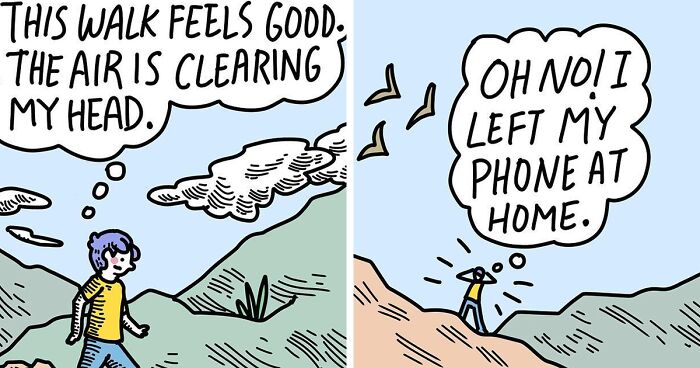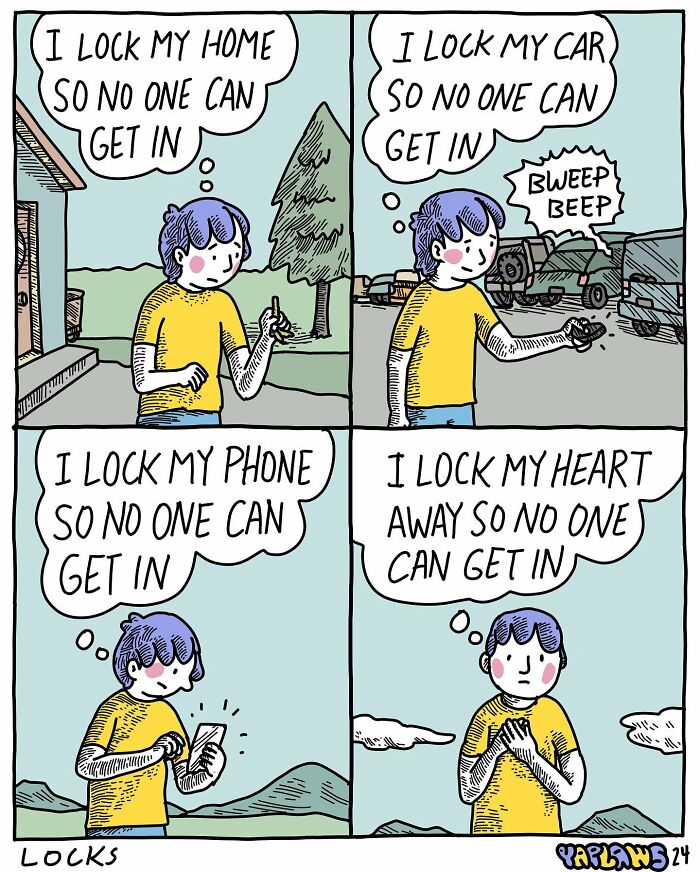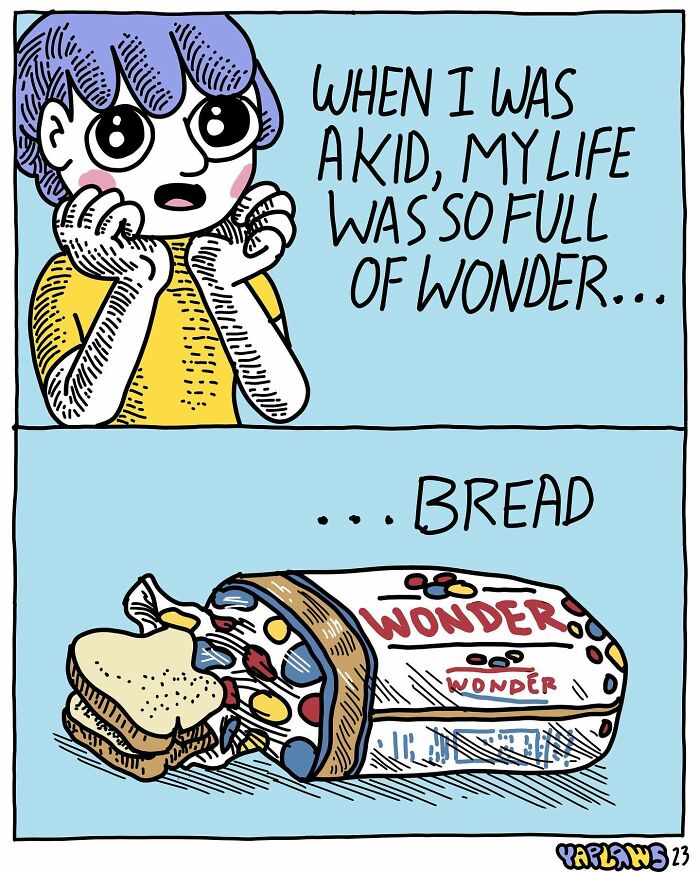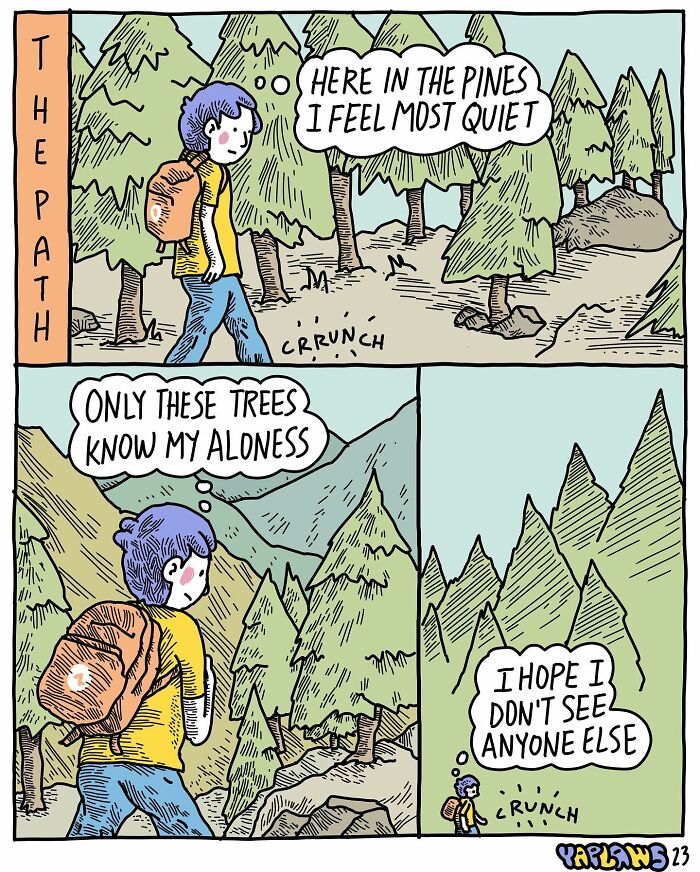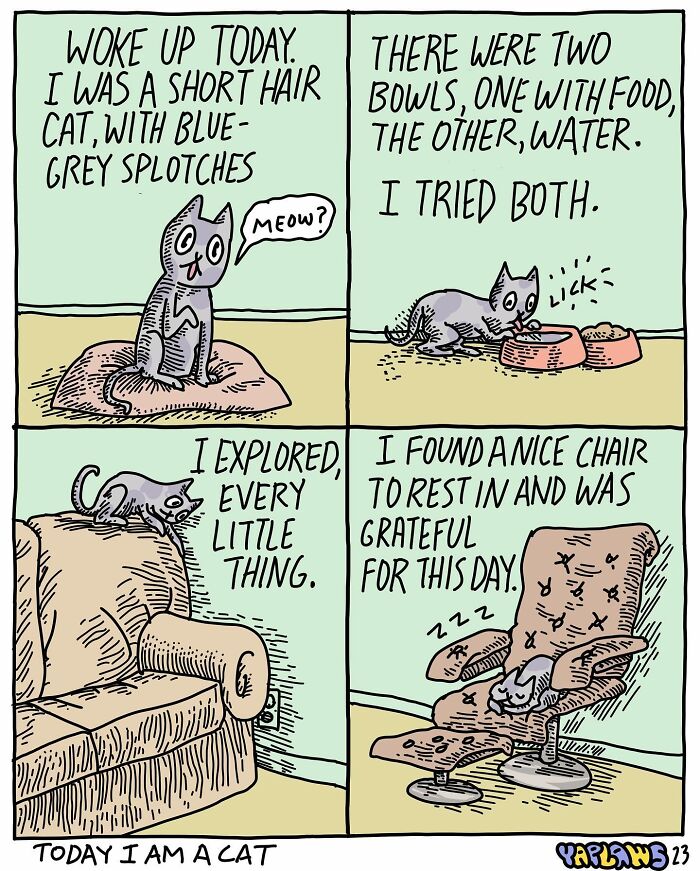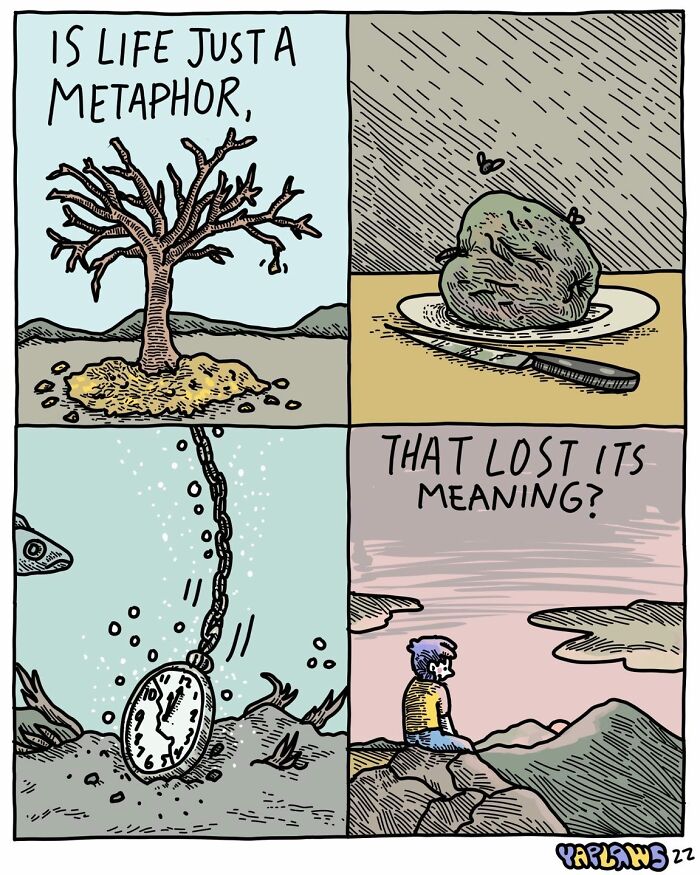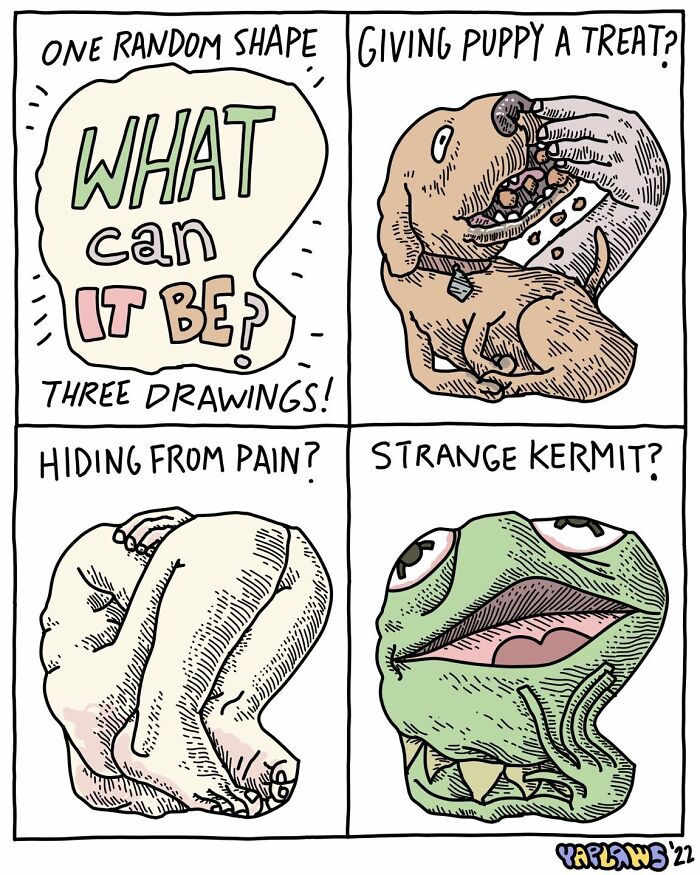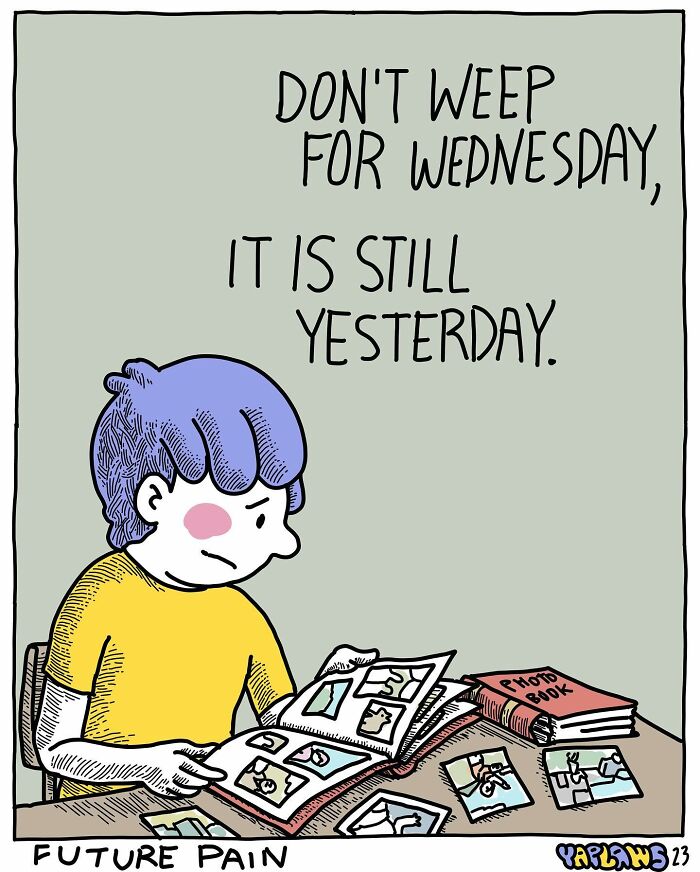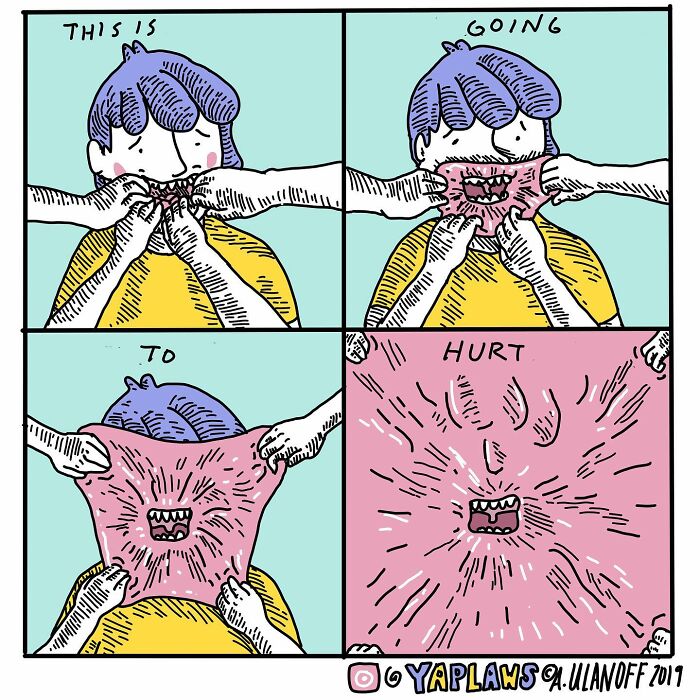
19Kviews
Artist Illustrates Difficult Thoughts And Feelings, Here Are His Newest Comics (30 Pics)
Interview With ArtistWe invite you to go through some "moody comics" by the artist Yaplaws.
Moody, probably because a lot of them touch on mental health struggles, whether it's doubting oneself or closing off to the world, and have a sad undertone, yet a few might make you chuckle. Sadness and happiness can go hand in hand, and this is how we feel about Yaplaws.
However, the artist previously shared his point of view regarding the themes in his comics: “I make comics as a means to express feelings and questions that I don’t know how to ask in another way. My comics are not necessarily about making readers smile. I always hope to connect with them on a deep emotional level. It also helps to create things others can relate to.”
More info: Instagram | yaplaws.substack.com | youtube.com | patreon.com
This post may include affiliate links.
Bored Panda reached out to the creator of Yaplaws, who kindly answered our questions.
First of all, the artist shared what initially inspired him to start creating comics, and how early influences shaped his artistic style.
“I would say that I was always a comic reader and collector. I was always gravitating toward independent artists like Robert Crumb and Chris Ware. I enjoyed the way that these “comics” could carry heavy messages that were not always about being funny or a gag-style payoff. I also loved the art and illustration of Edward Gorey. His fine-lined Victorian/engraving style, along with the dark humor, were also a strong influence. I find now that my style sometimes points directly at those geniuses, but I hopefully am creating something truly my own.”
Yaplaws' comics often delve into deep emotional themes. We asked the artist how he approached the process of translating complex feelings and questions into visual storytelling.
“When I started creating comics, it was right in time with the whole mess of getting divorced. I had a lot of feelings and needed a way to reflect them - or maybe even release them out into the world. The more I told of the story of my relationship dissolving, the more honest I felt I could be to the outside world. I found that I was able to tell a short story in a few panels with a combination of words and just a simple facial expression. The hardest part of the process is the kernel of the idea, which gets me to the sketch phase (including a rough copy). But I often think of a ton of new ideas and second-guess them right away. Making art always feels like this is the last original idea you’ll ever have,” opened up the artist.
I once said that and a troll replied with how unoriginal it was, lol. I love this though and it made me sad too.
Load More Replies...Just take a picture of me now. I never allowed anyone or anything to kill my inner child
Yaplaws' artist mentioned that he used to create around 10 comics a day but has since scaled back.
“Initially, I was creating comics nonstop - every day. I was spending less time on a single comic than I do now. Over time I have gotten a more solid handle on my characters and how I draw the world I am trying to create. In the beginning, the lines that define the shading were less consistent. Now when I do it, I take the time to make it feel like a more well-defined visual. In addition to creating the comics, I also like to stretch my mind a little and do live drawing, which is just me on video drawing without a plan and let it tell me where it wants to go. Even though I don’t have a plan - employing my fine-lined shading to the art - it becomes part of my work. Drawing this way can help make you better at drawing and teaches you how to see things a little differently,” wrote the artist.
Regarding the influence of formal education in the Fine Art and commercial art world, the Yaplaws comic artist shared how it affected his artwork.
“I went to school for fine art and found my way into doing graphics for TV networks. I worked in that business for many years but did not create comics till only the last five. I learned one thing in school that really helped me from then on - being critical. I learned how to look at art of any kind and could dissect it for both positive and negative attributes. I could also look at my own work critically and in doing so I improved. In art, education might easily be defined as inspiration, which is why I have a huge collection of comics and illustrated books. They are my teachers.”
And lastly, the artist expressed how it feels to have his work resonate with so many people, and how this has impacted his artistic journey: “When I discovered that my comic art meant something to even a single reader, it gave me the boost to continue creating and distilling tough questions that were relatable. I feel like I found a whole community that understood what I meant in my art, which made me feel safe enough to be honest.
I still strive to be open and strike a balance with my work as a whole. By balance, I mean having novel ways of presenting the ideas through humor, darkness or even the unexpected. Even though social media is moving away from the still image, I believe people still like to read books in print and I hope to finally create a complete and continuous narrative in the form of a graphic novel.”
Eh, most of these felt very unfinished, like there was supposed to be more.
Eh, most of these felt very unfinished, like there was supposed to be more.

 Dark Mode
Dark Mode 

 No fees, cancel anytime
No fees, cancel anytime 









